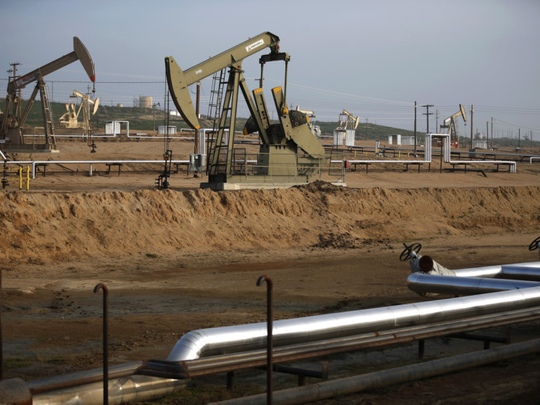
Dubai: The WTI-Brent spread shrunk further, narrowing to a little over $1 (Dh3.67) per barrel on Tuesday, after inventories at a NYMEX (New York Mercantile Exchange) delivery point fell even as US readies to loosen its export ban.
This indicates a return to normal supplies in the US, meaning the impact of shale oil is beginning to wear off.
On Tuesday, NYMEX crude traded 2.92 per cent lower at $47.27 per barrel, while Brent crude was at $48.74, indicating a spread of $1.47.
The spread reached as high as $28 per barrel in early 2013, when physical constraints limited crude from the US midcontinent and Canada from reaching refining centres on the US Gulf Coast (USGC), according to Opec.
But significant capacity expansion has allowed flows from major producing regions in the US and Canada to reach the USGC, which shut out imports, pushing these crudes back into the international market and putting downward pressure on Brent prices.
Due to this, the spread between the two global benchmarks has been on a consistent decline. The spread averaged out at $6.5 per barrel last year, after witnessing an average of $10.29 per barrel for five years.
“Now, the actual supply fundamentals would play in the market, and spread would narrow down further,” Pradeep Unni, senior relationship manager, Richcomm Global told Gulf News.
US is on track to loosen its export ban, and is driving the price convergence of the two benchmarks.
Lose premium:
“Brent may lose its premium over WTI after the removal of the export ban as the market would react to normal supply demand fundamentals,” said Unni.
This clearly indicates the increasing production in US and fears over weakening demand for brent oil globally. However such narrow spread will make US home production or transport costlier. This narrow spread will boost US imports, increasing inventories on the Gulf Coast and at Cushing, Oklahoma, said Unni.
Cushing, Oklahoma, is the delivery point for NYMEX crude futures contracts.
US crude production climbed 60,000 barrels a day to 9.19 million in the seven days ended January 9, the highest in weekly estimates that started in January 1983, according to Energy Information Administration (EIA) data. Crude imports rose 636,000 barrels a day to 7.49 million.
Oil slumped almost 50 per cent last year, the most since the 2008, as the Organisation of Petroleum Exporting Countries resisted calls to cut output even as the US pumped at the fastest rate in more than three decades.












